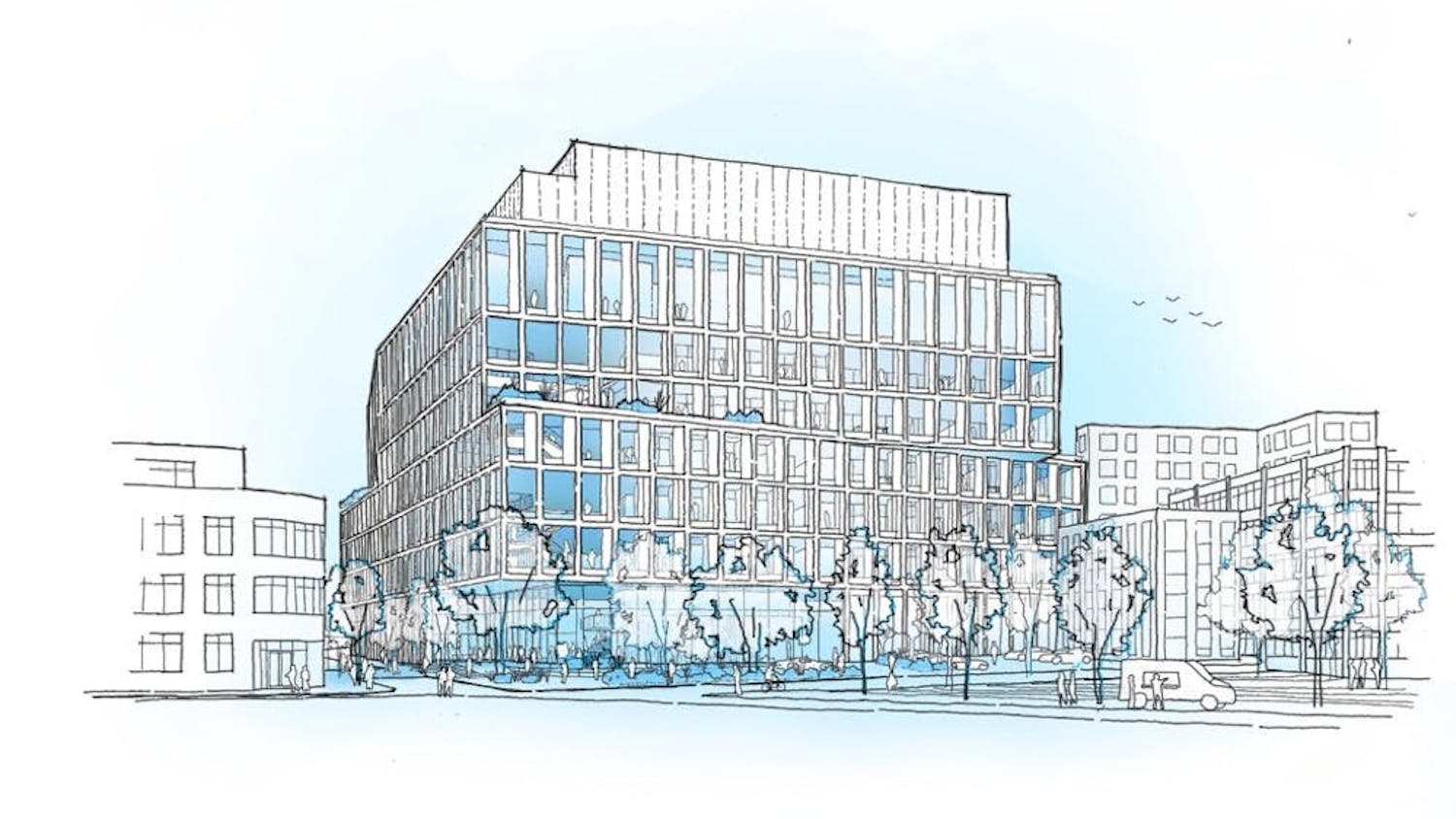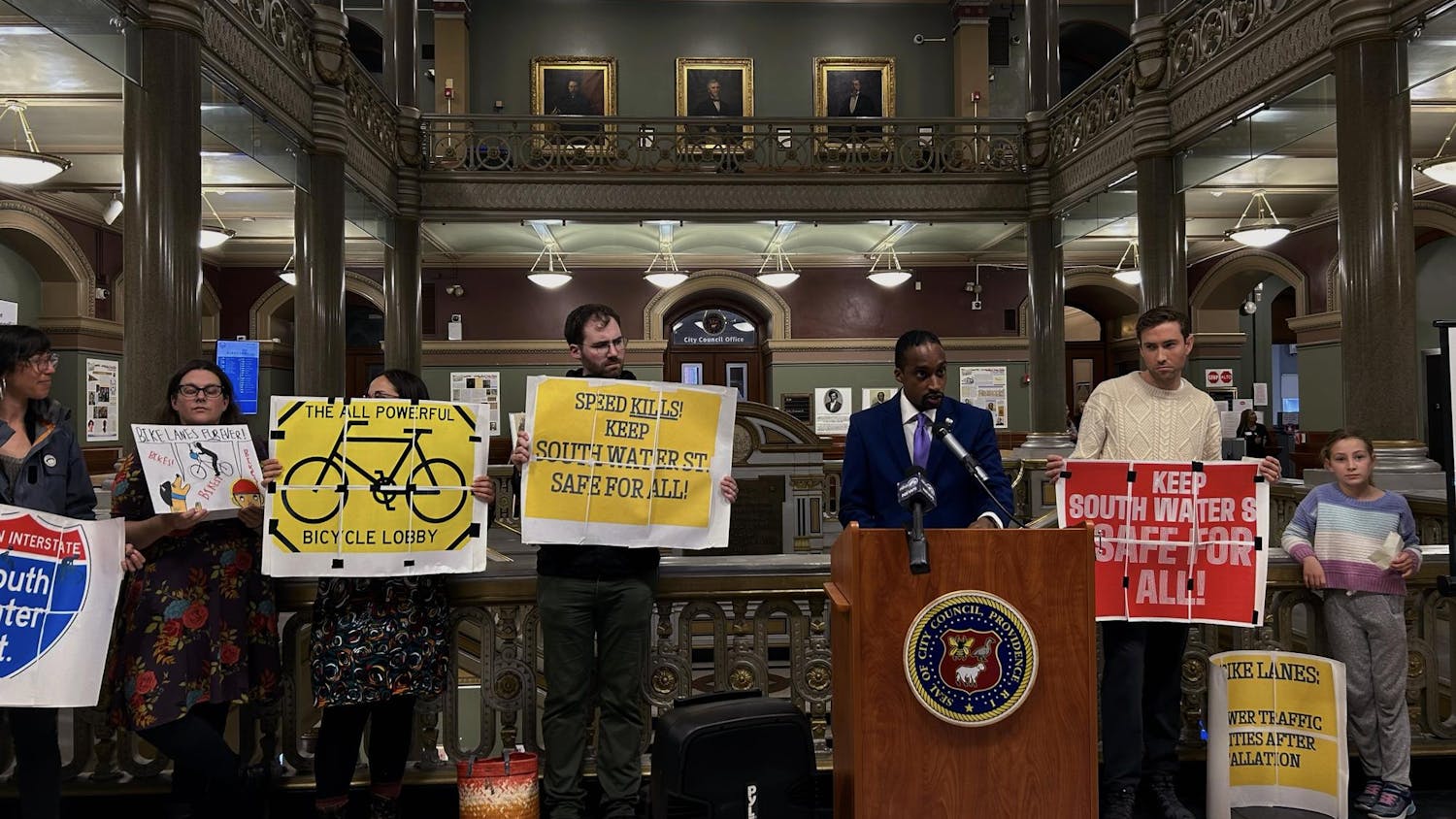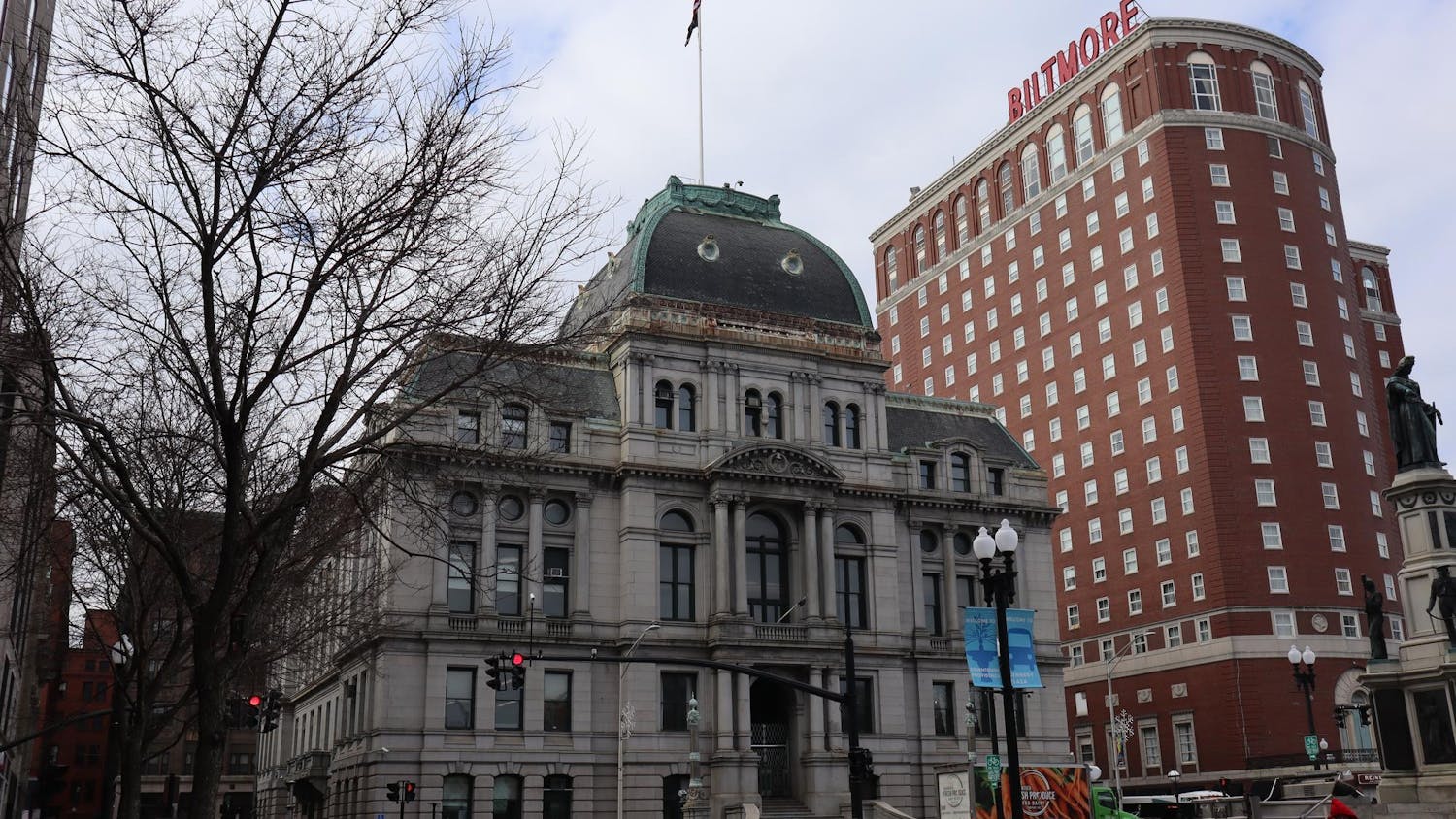Providence saw 5,889 crimes in total during the University’s fall semester, from Sept. 10 to Dec. 22, according to a crime statistics map released by the Providence Police Department. Crime experts confirm that a closer look reveals numerous trends related to the times of day, season and locations of criminal occurrences.
Downtown disorder charges
Disorder charges composed 20 percent of all crimes. These violations were the second-most reported, following just behind theft, which made up 23.1 percent of total crimes.
Most of these crimes constitute public disturbances that affect quality of life. Some specific populations, such as the homeless, may be pegged more often for committing these crimes, experts said.
Disorder cases were most highly concentrated in downtown Providence during the fall semester. Over the course of those four months, Kennedy Plaza saw 14 disorder charges; Providence Place, 12; Washington Street, 14; and Westminster Street, 28.
These locations host a large portion of Providence’s homeless population, who are often the victims of police discrimination, said Kate Miechkowski, an outreach advocate at the House of Hope, a group dedicated to preventing and reducing the social trauma of homelessness in Rhode Island.
“For the most part, what I’ve witnessed is the police coming and inviting themselves into situations that they don’t need to be involved with,” Miechkowski said.
She said she has witnessed policemen driving by Broad Street every 10 to 15 minutes, pulling up and blaring their sirens. The sound signals that it is time to leave the area, Miechkowski said. “Everybody knows because it happens every day … they’re telling you to move even if you’re not doing anything wrong.”
Those who are homeless are seen as criminal because not having a permanent place to live is perceived as deviant or non-normative, said Stefano Bloch, professor of urban studies.
While a homeless person may not be engaged in an activity any different from that of a typical Brown student out acting obnoxiously or drunkenly, “a homeless person is arrested for being outright annoying because their status as homeless is really what’s being criminalized,” he added.
But Dean Isabella, captain and commander of the special projects unit for the Providence Police Department, attributed the prevalence of crime around Kennedy Plaza primarily to the large influx of people who move in and out of the area using the city’s bus system, rather than simply its homeless population.
The Providence Police Department works closely with social service agencies to perform outreach within the community to help the city’s homeless population, Isabella said. “We would much rather get them into the social services they need to prevent them from committing those types of disorder crimes in the first place.”
Providence’s police department is one of the few in the United States that boasts both a full-time mental health clinician and social service advocacy agency that work alongside them, he added.
“We look at (these data) to be proactive and preventative in regards to crime trends,” Isabella said.
Prostitution along Elmwood and Atwells Avenues
Of the 15 prostitution charges in Providence during the fall, three occurred within a small range along Atwells Avenue, and four along Elmwood Avenue.
“Like any other business, what’s important is location,” Bloch said. “Prostitutes will often designate certain areas as the place for Johns to solicit sex.”
Isabella confirmed that these areas, located in the West End and Valley neighborhoods, respectively, have typically been used by prostitutes as areas to attract business.
Bloch added that prostitutes may heavily frequent industrial or retail areas, or areas of economic impoverishment. Specific blocks or locations tend to become hotspots for prostitution, as they become well-known, he said.
To address prostitution in Providence, the police force works with social work organizations such as Project RENEW — Revitalizing Engaging Neighborhoods by Empowering Women — which aims “to try to get people who are in prostitution off the streets and into services, such as drug treatment and mental health services,” Isabella said.
Thanksgiving decline
The week with the lowest rates of overall crime on College Hill was between Nov. 26 and Dec. 3, coinciding with the University’s Thanksgiving break.
This trend correlated with the student population leaving campus, Shanley said. “There’s less opportunity for criminals to come here and do anything.”
Experts also agreed that it is typical to see a decrease in crime during holidays spent with family.
“It seems to me that during Thanksgiving, people are just at home more,” Bloch said. “The people who would commit crimes are spending time with their families, like everyone else.”
Isabella indicated that crime fluctuates throughout the year. “During the summer, when people are out on the street more and the weather is better, crime rises slightly. During cold weather events, it lowers.”
The police department may analyze these long-term crime trends to strategically pool their resources around high-crime periods, he added.
Day vs. night
While many perceive the night as the time crime is most likely to occur, data suggest that some crimes do not follow such a predictable pattern.
About half of all assaults occurred during daylight hours, between 7 a.m. and 7 p.m. But assaults occurred most frequently between 8 p.m. and 2 a.m., with 6.9 percent of all assaults occurring between 10 p.m. and 11 p.m.
“Historically, when you think of random assault, that generally does occur at night,” Shanley said. Yet domestic assaults commonly occur during the daytime.
“Random assaults are one of the rarest occurrences,” Bloch said. “You are most likely to be assaulted by somebody you’re related to, somebody you’ve done business with — either legally or illegally — or somebody you’re either in love with or have recently fallen out of love with.”
Trends appeared concerning the timing of other common crimes as well.
Robberies occurred more often under the cover of night. Just 36.5 percent of robberies were carried out between 7 a.m. and 7 p.m. Of all hours in the day, the most robberies occurred between 9 p.m. and 10 p.m. — 9.5 percent of the total.
But the trend reverses when looking into accounts of breaking and entering. Nearly 60 percent of the incidences of breaking and entering took place during the daytime, with 4 p.m. as the peak hour — 8.8 percent of the total.
Isabella explained that most reports of breaking and entering take place when people are at work during the day, while robberies occur during the afternoon or evening when there are fewer people to observe the robbery taking place.
While, as expected, 74.5 percent of liquor crimes took place at night — with 20.4 percent of all liquor violations occurring in the hour before midnight — drug crimes were more likely to be reported during the day. Of these violations, 77 percent occurred during daylight hours, with 12.4 percent of all drug crimes occurring between 11 a.m. and 12 p.m.
Liquor law violations
On College Hill, 10 liquor law violations were reported along the 100 block of Ives Street. Madeira Liquors and the pub Captain Seaweed’s are both located on this block.
The 200 block of Meeting Street, a range that includes liquor store Spiritus Fermenti, saw three violations. While he could not comment on these areas specifically, Isabella confirmed that areas with bars and liquor stores near college campuses tend to see a higher rate of liquor law violations.
These trends follow a semester in which police cracked down more severely on underage drinking. The Herald reported in October that local cops were posing undercover at stores such as Darwin Liquors, Spiritus Fermenti and Madeira Liquors to apprehend customers without valid identification.
“We have a license enforcement unit that frequently checks every licensed liquor establishment in the city of Providence,” Isabella said. “Some of them get a reputation for serving underage people, which draws more folks to them, which requires us to check those locations more frequently.”
Missing persons epidemic?
Four streets in Providence appear to have startlingly high missing person counts. Eighty-two missing persons were reported at the 100 block of Knight Street, 93 at the 300 block of Hope Street, 102 at the First block of Dartmouth Avenue and 129 at the First block of Tappan Street.
As it turns out, the calls come from outreach and residential services that house at-risk populations — commonly known as group homes — which are located along these blocks, Isabella explained.
“Whenever a client of a group home doesn’t return in time for a curfew or decides to not go back to the group home, the group home is obligated to file a missing persons report,” he said.
ADVERTISEMENT




